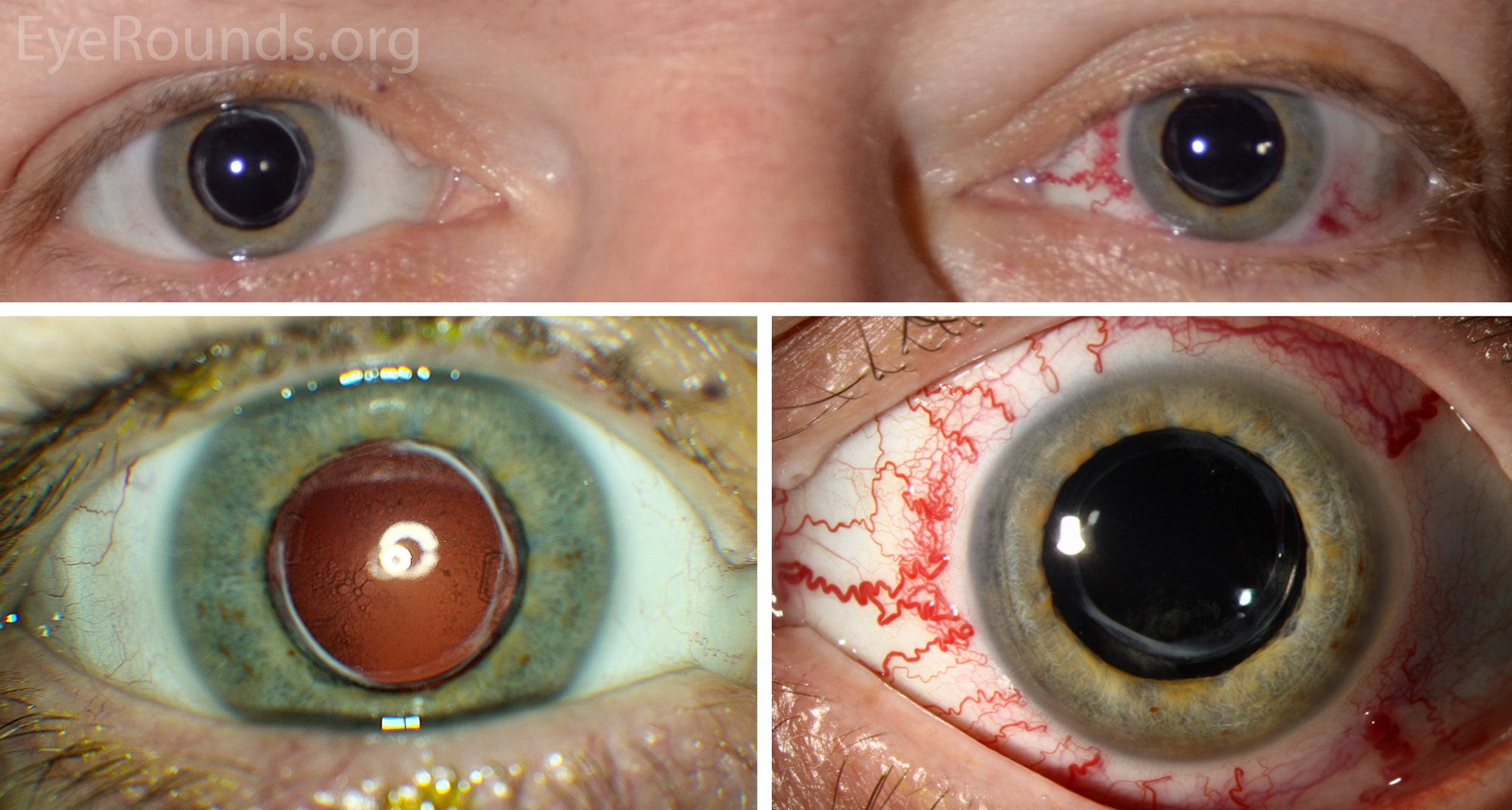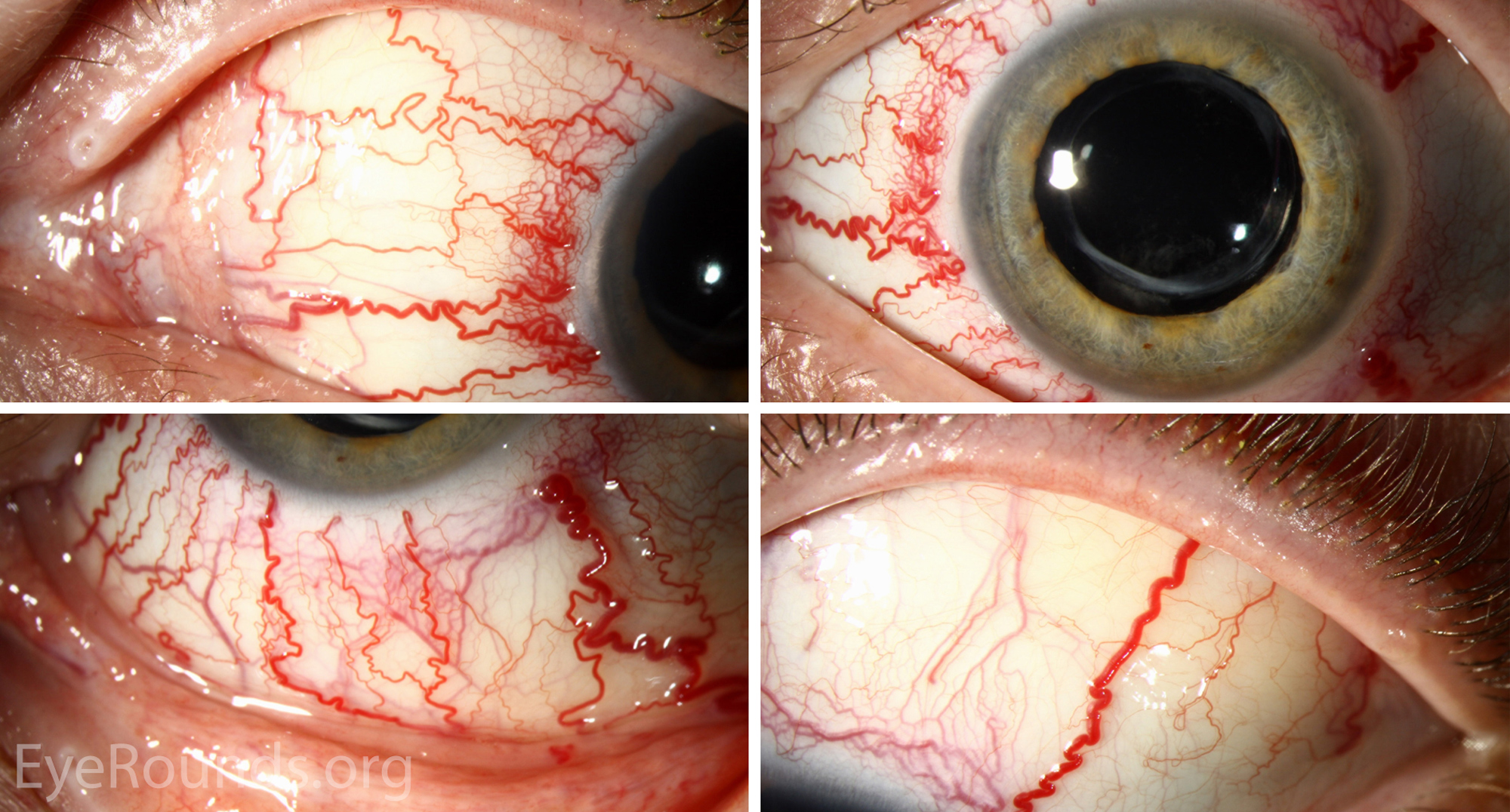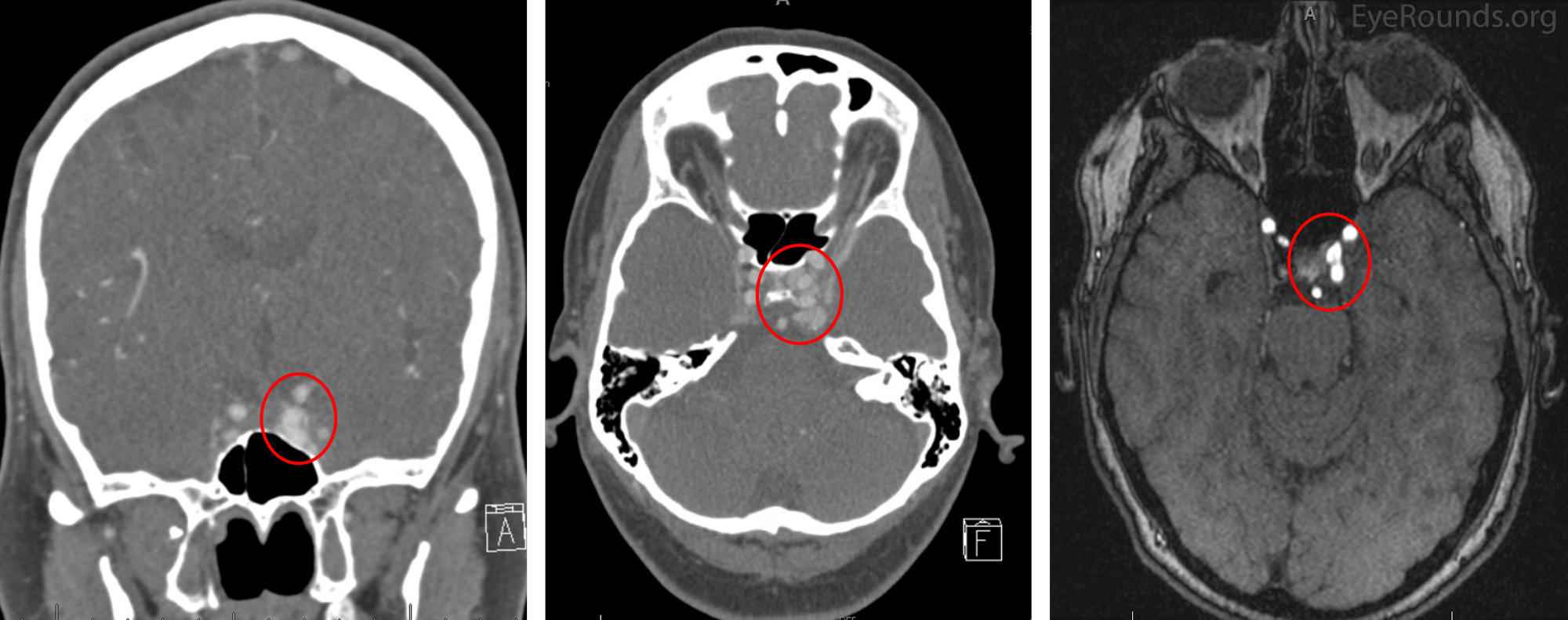
A carotid-cavernous fistula (CCF) is a pathologic shunt between the carotid artery and the venous cavernous sinus; such hemodynamic lesions often lead to the triad of exophthalmos, epibulbar arterialized loops, and glaucoma. Diagnosis is by clinical examination, computed tomography or magnetic resonance angiography, and/or catheter angiography. A direct CCF (type a) connects the intracavernous portion of the internal carotid artery (ICA) to the sinus, whereas indirect, or dural, fistulas (type b) are low-flow fistulas that connect ICA branches to the cavernous sinus (1). If vision-threatening signs develop, then embolization must be considered.






Ophthalmic Atlas Images by EyeRounds.org, The University of Iowa are licensed under a Creative Commons Attribution-NonCommercial-NoDerivs 3.0 Unported License.